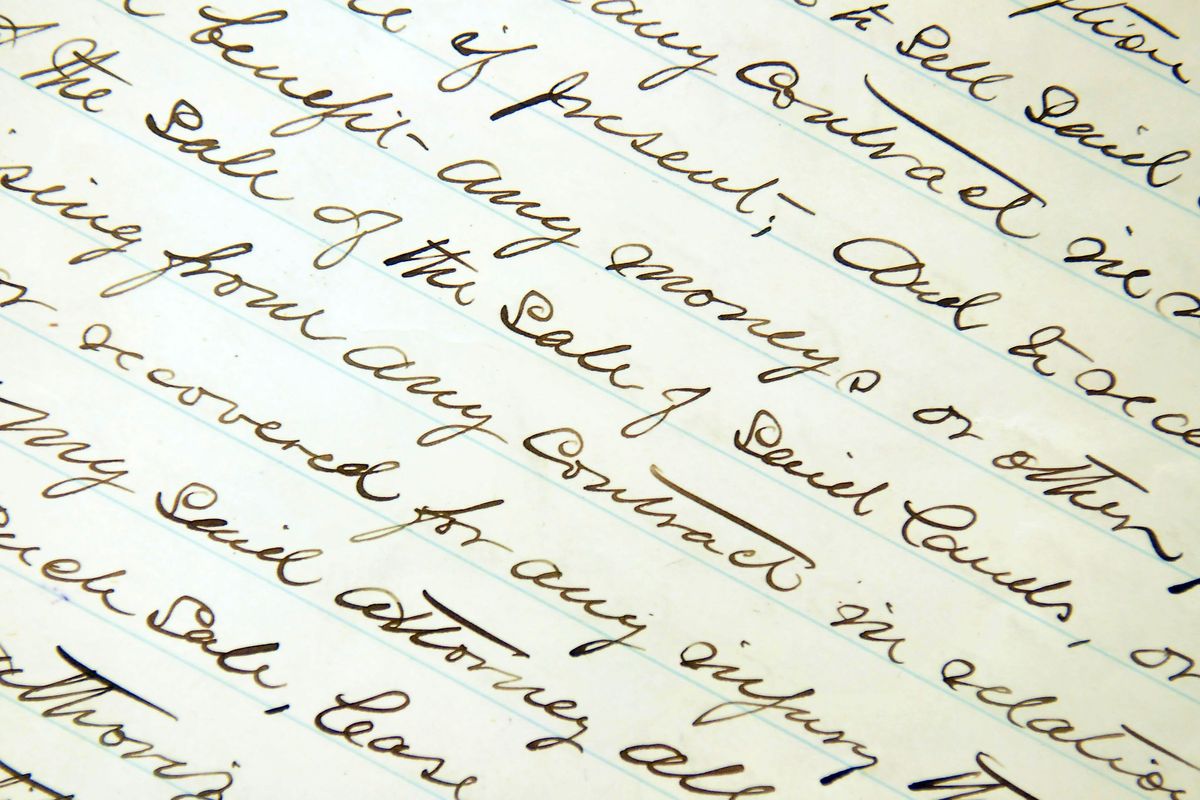County auditor’s project to digitize records nears completion

An 18-month project to preserve the hopes and dreams of generations of Spokane County residents is nearing completion.
Paper may crumble, but faded writing in scores of oversize books at the county auditor’s office will continue to tell the stories of long-forgotten sweethearts who married, bought property and were laid to rest.
By April 15, some 3 million documents containing 5 million pages from as early as 1879 will be available on computers at the Spokane County auditor’s office.
Documents that might have taken days to find in oversize, handwritten index books will be available in minutes if not seconds.
“These books are people’s lives,” Auditor Vicky Dalton said. “Every one of these books contains something about people’s lives.”
Take John W. Rozen, of Ohio, and Mary “Emma” Robinson, of Oregon. Their marriage on Jan. 6, 1880, was the first to be recorded in Spokane County.
They bought some land from the Northern Pacific Railroad Co. the following year and went on to buy and sell several properties.
In 1885, a territorial census showed John, then 30, was working as a carpenter and 26-year-old Emma had borne two children, 3-year-old William and 1-year-old Myrthie.
By 1887, John Rozen was working as a mechanic and 1-year-old Susie had joined the family.
Auditor’s records also tell the history of the county’s development, logging every property transaction since the land was just dirt, Dalton said.
A couple of subdivision plat maps were recorded in 1879, and the earliest recorded deeds followed in 1880.
“We are the core of the real estate industry as far as documentation,” Dalton said.
The office records some 300 types of documents, including plat maps, surveys, easements, deeds, liens, mortgages and “releases” when mortgages and mortgage-like deeds of trust are paid off.
Title companies use those records daily and have their own desk in one of the auditor’s vaults. Other heavy users include surveyors, lenders and real estate agents.
A representative of the Eastern Washington Genealogical Society also used to haunt the auditor’s vaults, but Dalton said she hasn’t seen him “for ages.”
Digital, computer- searchable copies of Spokane County’s marriage records and territorial census reports are now available through the Washington State Archives branch in Cheney.
The archive scanned the marriage certificates from 1880 to 1974, and the auditor’s office has scanned the rest of its records.
Since June 1996, new documents have been scanned as they arrive, and old records have been processed as time and money allow.
Until the current project started in October 2009, the work had been done in-house and with a couple of contracts that totaled around $20,000, according to recording manager Melanie Muzatko.
A Saginaw, Mich., company has nearly fulfilled its approximately $801,000 contract to scan and index pre-1996 records of land transactions. The work allows digital access to all the documents needed to establish a property’s chain of ownership.
“This project was the big one,” Muzatko said.
To keep it affordable, little-used documents such as long-paid mortgages weren’t scanned.
Dalton said it took 20 years to save enough money for the job, using state-authorized surcharges on document recording fees.
The “back-scan” project had to take a back seat to the new documents, which total about 100,000 in a slow year such as 2010. Muzatko said a record 196,295 records were filed in 2003.
The old paper records are being transferred to the state archives in Cheney, where temperature and humidity are carefully controlled and other state-of-the-art preservation techniques are available.
The old books continue to serve as one of several backups for the new digital records, which state archives staff will transfer to new formats as computer technologies emerge.
“We’re literally looking toward the end of our civilization,” Dalton said. “That’s how important these records are.”
County Facilities Director Ron Oscarson said 2,500 to 3,000 square feet of space has been cleared in the county courthouse by sending auditor’s record books to the state archives.
That’s about one-third of the office and storage space on the second floor of the courthouse, Dalton said.
Oscarson estimated the recovered space may triple when other departments scan their old records. A similar project to scan nearly 9 million pages of Superior Court records is under way in the county clerk’s office.
Dalton and Muzatko expect it will take at least five years to transfer all of their books to the state archives. The tried-and-true index books must stay in the courthouse until the new digital indexes and documents have been checked for accuracy and completeness.
“If we give somebody a document that’s missing two of five pages, that isn’t going to work,” Dalton said.
Of course, the paper records aren’t perfect, either. Dalton said the back-scan project turned up some “little bombs,” including an apparent 150-document gap in plat maps.
After a lengthy investigation, Dalton and her staff concluded that no plats were recorded during World War I, and filings resumed with a new numbering system after the war.
“But nobody left us a note to tell us that,” Dalton said.
Another side benefit of the scanning project is that computer manipulation sharpened faded handwriting and corrected some early photocopies with hard-to-read white type on black backgrounds.
“I’ve already had so many positive comments,” Muzatko said.